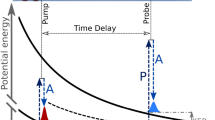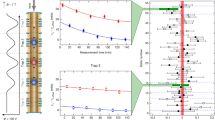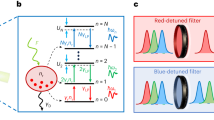Abstract
A RECENT communication by (the late) S. Heron, R. W. P. McWhirter and E. H. Rhoderick1 on “Measurements of Life-times of Excited States of Atoms by the Method of Delayed Coincidences” was read with much interest here. Their method consists of exciting a source for 2 × 10−8 sec. and observing the intensity of the light emitted by the source at a given time after the excitation. Thus they observe the behaviour of a large assembly of atoms.
This is a preview of subscription content, access via your institution
Access options
Subscribe to this journal
Receive 51 print issues and online access
$199.00 per year
only $3.90 per issue
Buy this article
- Purchase on Springer Link
- Instant access to full article PDF
Prices may be subject to local taxes which are calculated during checkout
Similar content being viewed by others
References
Heron (the late), S., McWhirter, R. W. P., and Rhoderick, E. H., Nature, 174, 564 (1954).
Dunworth, J. V., Rev. Sci. Instr., 11, 167 (1940).
Bell, R. E., Graham, R. L., and Petch, R. E., Can. J. Phys., 30, 35 (1952).
Birks, J. B., and Wright, G. T., Proc. Phys. Soc., B, 67, 657 (1954).
Author information
Authors and Affiliations
Rights and permissions
About this article
Cite this article
BRANNEN, E., HUNT, F., ADLINGTON, R. et al. Application of Nuclear Coincidence Methods to Atomic Transitions in the Wave-length Range λλ 2000-6000 A.. Nature 175, 810–811 (1955). https://doi.org/10.1038/175810a0
Issue Date:
DOI: https://doi.org/10.1038/175810a0
This article is cited by
-
Die Lebensdauer der Heliumzustände
Acta Physica Academiae Scientiarum Hungaricae (1966)
-
Les méthodes optiques de la résonance hertzienne
Il Nuovo Cimento (1957)
-
The Question of Correlation between Photons in Coherent Light Rays
Nature (1956)
Comments
By submitting a comment you agree to abide by our Terms and Community Guidelines. If you find something abusive or that does not comply with our terms or guidelines please flag it as inappropriate.



